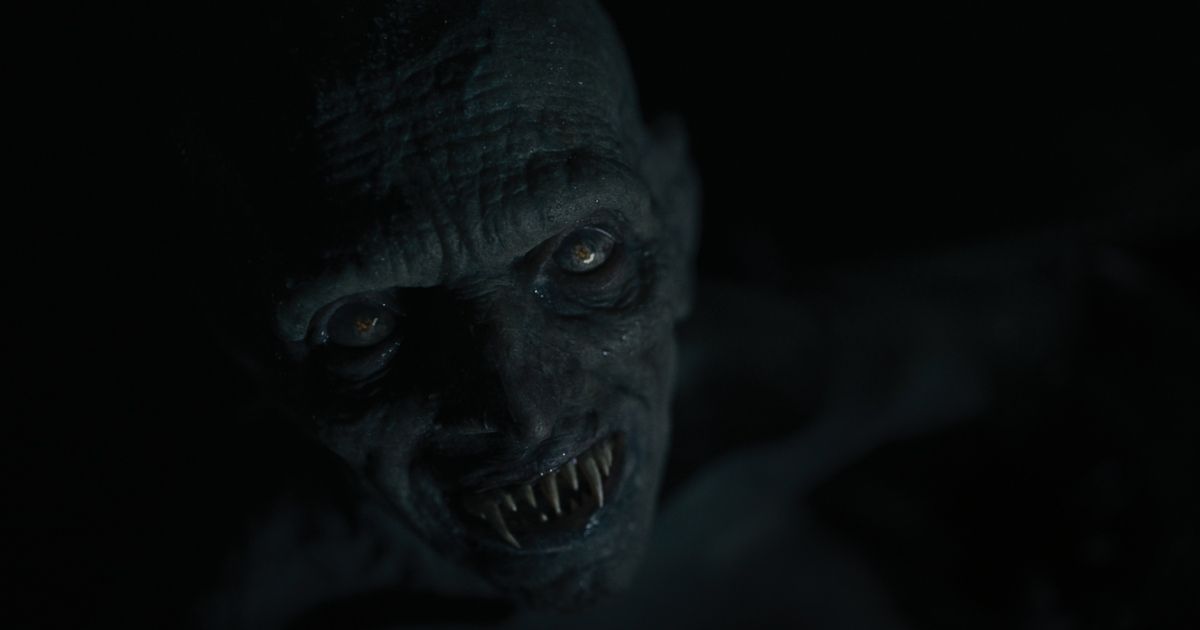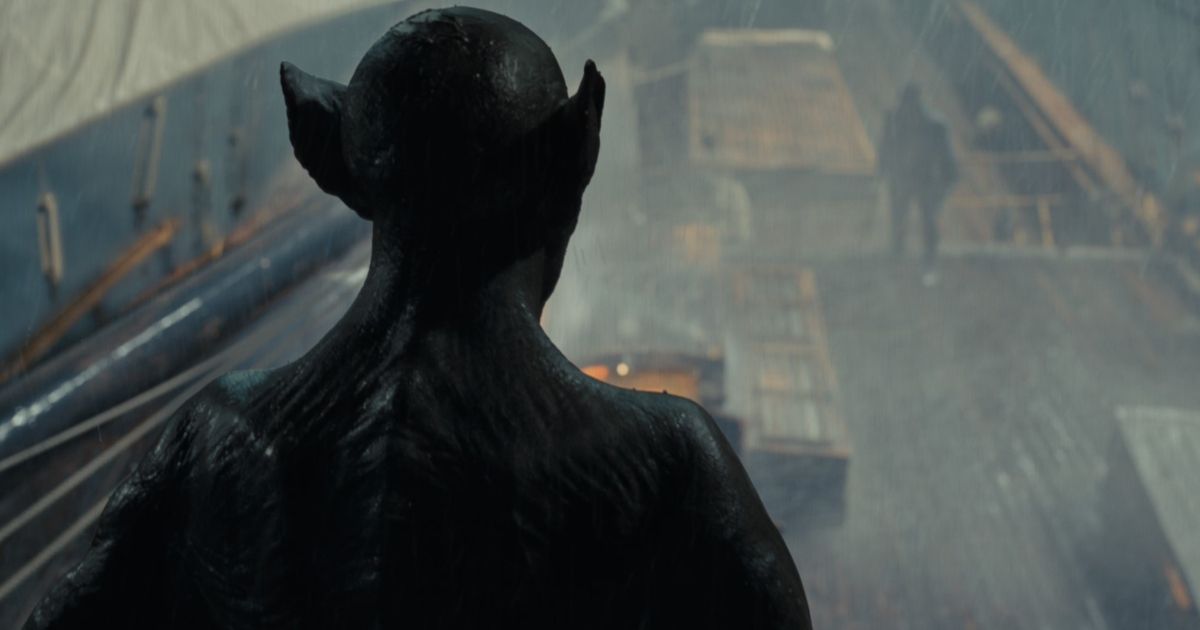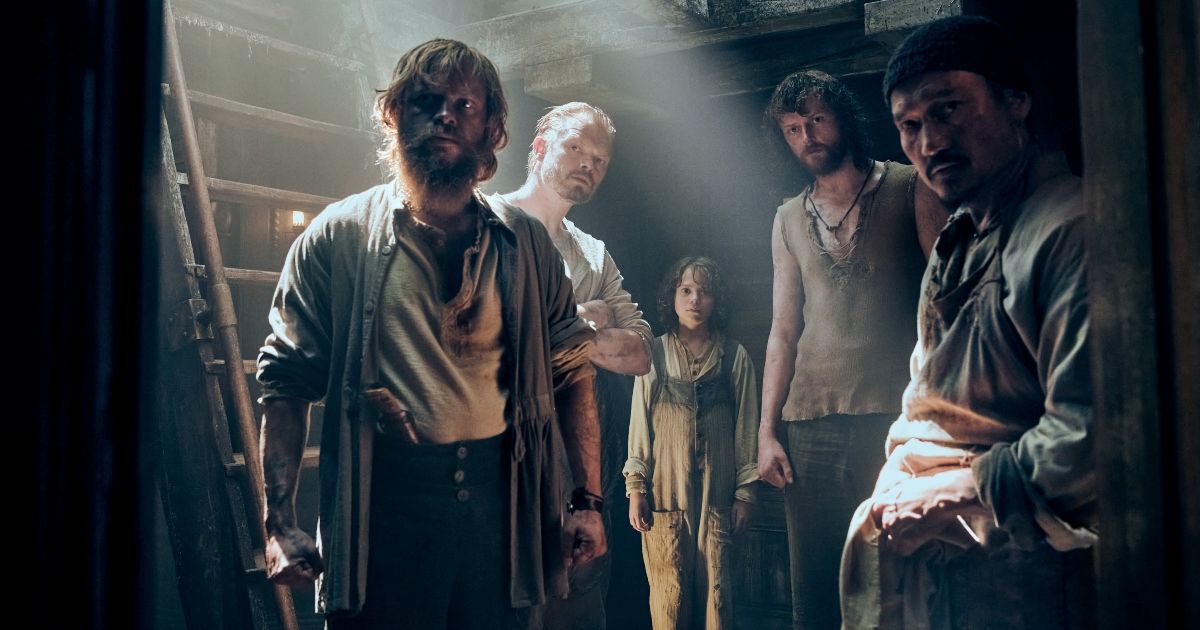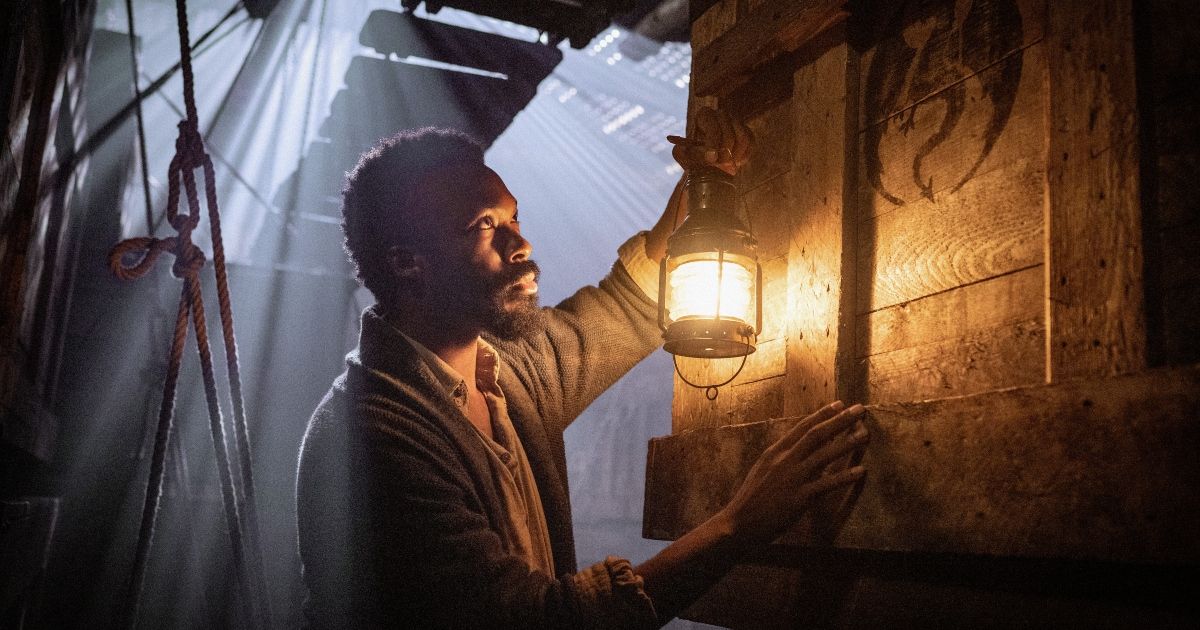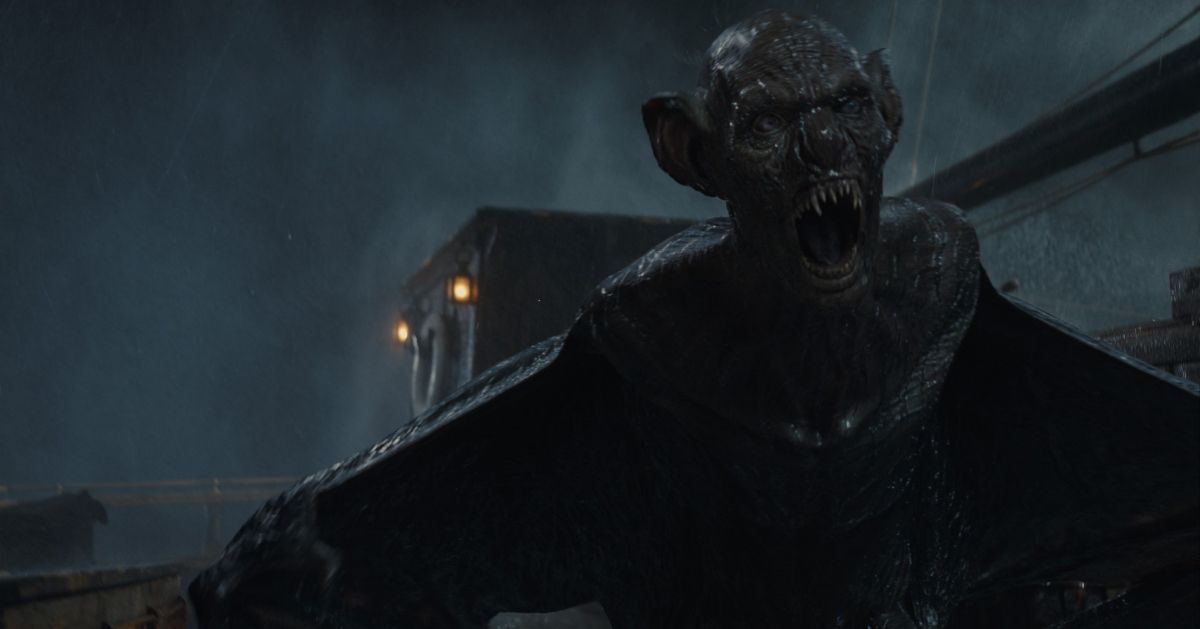Dracula's hot. The bloodsucker always has been, it seems, dating back cinematically for more than a century. But with this year's Empire V and Renfield, along with upcoming films like Robert Eggers' Nosferatu and a possible Dracula remake from Chloé Zhao, it seems like vampires are trending. One of the most distinct Dracula movies to come along in a while, however, is the gothic new film The Last Voyage of the Demeter.
The film is inspired by the Captain's Log portion of Bram Stoker's Dracula novel, which is a brilliant idea; the section essentially works as a self-contained story, very different from the overdone adaptations of the book as a whole. It turns the vampiric count into clandestine cargo on a schooner headed to England, where he'll own property and have a wider array of prey. The ship's captain and crew then become the major players here, as they are trapped in the middle of the ocean with a killer that needs at least some of them alive to bring the ship to shore.
The Last Voyage of the Demeter is a film long in the making. Producers Mike Medavoy and Bradley Fischer have been trying to get it completed for more than two decades now, and they're both different people than when they began. Medavoy is a legendary producer, one of the most important in the history of cinema. He headed production for United Artists, Orion Pictures, TriStar Pictures, and, more recently, Phoenix Pictures. He oversaw the completion of such classics as Annie Hall, Apocalypse Now, Raging Bull, Platoon, Amadeus, RoboCop, Dances with Wolves, The Terminator, The Silence of the Lambs, The Thin Red Line, Shutter Island, and Black Swan.
Fischer is younger, but has executive produced and produced the new Mission Impossible and Transformer movies, along with Ready or Not, Ambulance, The Tomorrow War, White House Down, Suspiria (2018), and Phoenix Pictures films with Medavoy like Black Swan and Shutter Island. Both men obviously have a long pedigree of success, and their belief in The Last Voyage of the Demeter is a testament to its quality. Medavoy and Fischer spoke with MovieWeb about the journey to make the film and its incredible production.
The Long Voyage to the Demeter
"So this script, Mike and I, and Arnie [Arnold W. Messner] optioned this in 2002," began Fischer. "And I flipped for it, because I thought, 'Okay, here's a story inside the Dracula lore that's canon, that has never been fully dramatized as a feature film. What an incredible opportunity to take this amazing narrative device of the captain's log that was provided by Stoker.'"
"Of course, the original Dracula novel is epistolary in nature," continued Fischer. "It's written in the context of journal entries, and ephemera, and letters, and what have you. It's almost these historical artifacts that Stoker kind of stitched together to weave this larger canvas of a horror epic. And this centerpiece is not absent in the history of Dracula adaptations, but had always served as little more than connective tissue. In the original Nosferatu, there's those famous images of Max Schreck on the ship, and actually it's almost comedic."
You know, because that story had never really been told, it was something that Mike and I both thought, 'Okay, here's something out of well-trod IP that is in itself original in a way, and pretty fresh and terrifying.'
21 years later, and The Last Voyage of the Demeter is finally being released. The waiting game is common to producers, though. "The issue of how long it's been is never an issue to me. And I think it isn't to Brad, either," explained Medavoy. "Of course, it's less of an issue when it gets done. But you know, today, August 8, is the day that the Demeter washed into Whitney in the book. I was around when [One Flew Over the] Cuckoo's Nest got done, and it had been over [12] years; Kirk [Douglas] had done a play Off-Broadway of that. We've done other things that took a long time. Black Swan took 10 years, but there are other films that I've done that had taken a longer time."
"I think it's less important than the film itself," added Medavoy of the time it took to get the film made. "The passion that we have is about getting something done, even if it takes years, and we still talk about things that we put into development years ago, and we figure out ways of getting it done." He continued:
You know, the business is changing. It's not the same business when I started at UAE, or for that matter when I started before UAE, when I was an agent getting movies like Jaws done or The Sting done. The passion that Brad had for this, to get it done, is what got the movie made.
Building the Demeter
The end result looks fantastic, largely thanks to Edward Thomas' production design and the many artists who contributed to it. The crew literally built a functioning 19th century schooner, a 100-ton ship that was placed in a giant tank of water. "Yeah, it was the largest ship ever constructed at Malta studios. We also constructed a half ship that we had some CG extensions for the Varna sequence, and the interiors were all shot in Berlin on stage," said Fischer. It was a lengthy process overseen by Medavoy and Fischer, even as many actors and directors came and went from the project.
"We looked at so many different approaches to making the movie with all the different directors that had been attached over the years, from the most recent just before André [Øvredal], Guillermo del Toro was gonna direct it, and actually he put André up for the job when he had Nightmare Alley greenlit," explained Fischer. He continued:
"But the challenge from a production standpoint was always a combination of stages for the interiors and finding a horizon tank where we would build the deck in for the exteriors of the ship. You know, the big challenge was actually trying to find a port for Varna, because most ports are functioning, and they're modern. The way we did it was a version of all of those different production plans over the years."
"This is pretty spectacular," added Medavoy. "I mean, when we see that thing in the ocean, moving, it's great."
Alien on a Ship
That majestic ship is possibly the most dominant character in the film. From the creaking and echoing sound design and the claustrophobic interiors, to the rain-battered deck of the ship, the titular Demeter entraps the characters in its intricacies. Fischer believes that, because of the excellently designed ship, "As much as it's a Dracula story, it's a haunted house movie." He continued:
"The Demeter is an incredibly spooky haunted house, in the middle of the ocean. The one thing about haunted house movies normally is, well, why don't they just leave? But here, there is no place to go, there's nowhere for them to go. You know, the crow's nest is the attic. The cargo hold is the creepy basement where Dracula's hiding. There's a kid, there are people who find themselves alone in long, dark hallways with creaking floorboards."
"Yeah, there are two things that are kind of interesting," added Medavoy. "This is somewhat reminiscent of Alien on a ship. Right? I mean, there's nowhere for you to go. I mean, unless you want to jump into space and stay up there. That's one aspect of it. The second is, guess what? The devil is on the ship, and it's going to pick off each and every one of them. You just don't know who and when [...] If you're in a situation which you can't get out of, then you keep the audience really interested."
"So that aspect of the genre, I think, was incredibly important," said Fischer, "and the construction of our haunted house was obviously as important as the design of Dracula himself."
A Different Dracula Sails the Demeter
About that. The depiction of Dracula in The Last Voyage of the Demeter is fascinating. Visually, the vampire looks like a cross between its design in Nosferatu and Salem's Lot. In practice, it's at first radically different from what we expect Dracula to be (sophisticated, solemn, almost erotic). Instead, it's downright feral. However, that changes depending on how nourished the vampire becomes. This was a major focal point for the producers.
"We worked very closely, very early, with André on the design," explained Fischer. "Mike Hill was originally the person who put pen to paper on what he could look like and the different forms that he takes, because he obviously changes as he becomes more nourished, and as he changes from this more emaciated form, into the bat, and into something a little bit more closely resembling a human."
But that sort of feral approach to him that we haven't really seen, as opposed to Bela Lugosi's more seductive version of Dracula, was one that we were really drawn to.
"The other design element that was incredibly important, that we spent a lot of time on, was actually the anatomical details of the bat wing, the wing membrane, and the way that he would sort of fit into the center of this thing, which is probably the closest cousin is what Coppola did in his film [Bram Stoker's Dracula]," added Fischer. "But here, I think we really wanted to portray something that made sense from all of those points of view, and I think it's pretty terrifying."
Audiences will get to see it for themselves, along with the ship in all its practical glory, when Universal Pictures' The Last Voyage of the Demeter comes to theaters on Aug. 11.

